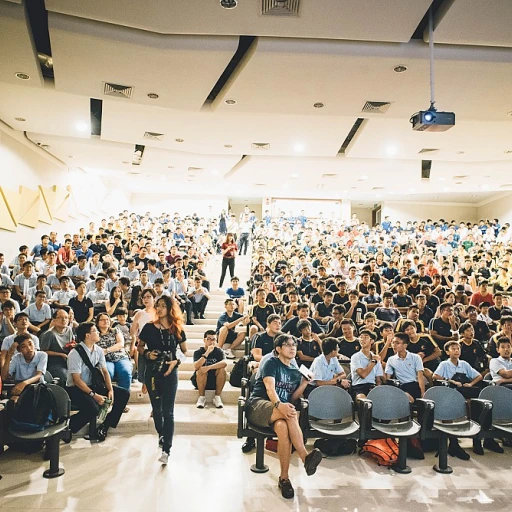Understanding Employee Monitoring
The Basics of Monitoring in the Workplace
In today’s digital era, employee monitoring is becoming increasingly common across various industries. With the rise of remote work and advanced technology, companies have more tools at their disposal to keep an eye on employee activity. While the intention is often to boost productivity and ensure compliance with company policies, it raises significant questions about privacy and trust.
Employee monitoring encompasses any method employers use to observe and track their employees’ interactions and work activities. The trend is driven by a blend of productivity pressures, advancements in monitoring software, and the growing feasibility of remote work environments.
Why Companies Monitor
- Enhance Productivity: By monitoring time and activity, companies hope to identify productivity bottlenecks and improve overall efficiency.
- Security Concerns: Monitoring tools help safeguard sensitive data from unauthorized access and potential cyber threats.
- Policy Compliance: Ensuring employees adhere to company guidelines, especially in regulated industries, is a priority.
As workplaces increasingly rely on digital tools, the line between ensuring productivity and infringing on employee privacy can sometimes blur. While monitoring can offer benefits from a managerial standpoint, it's crucial to strike a balance to protect employee privacy and maintain a trusting workplace environment.
Common Signs of Workplace Monitoring
Recognizing Signs of Being Monitored
In today's digital workplace, systems of surveillance are becoming increasingly common. As an employee, it's important to be able to identify the subtle signs that your work activities might be under scrutiny. Here are some indicators to help you determine if you are being monitored.
- Monitoring Software Notices: If you notice new software installed on your computer or notifications alerting you to monitoring systems, this might indicate that tracking tools have been implemented.
- Unusual Activity Logs: Regular reviews of detailed activity logs might suggest that your time and productivity are being tracked. This can include reports on your email correspondence, social media usage, and remote work habits.
- Frequent Check-Ins by Management: If your management or employers frequently seek updates on your work activities or ask for justifications of your time spent on tasks, there could be a monitoring practice in place.
- Use of Time Tracking Software: The implementation of time tracking software can be another sign. These tools are meant to improve employee productivity but often involve comprehensive activity tracking.
- Access Restrictions: Restricted access to certain websites or online services can signal that computer monitoring systems are active in the workplace.
- Presence of Monitoring Policies: Companies that actively engage in monitoring practices often have defined policies. It's advisable to review your company policies regarding employee monitoring and surveillance.
Understanding and recognizing these signs can help employees better navigate their monitored work environments. Awareness is key to adapting to how technology is utilized for monitoring in both physical and remote workplaces.
Technological Tools Used for Monitoring
Technological Approaches to Employee Monitoring
In today's digital workplace, companies employ various technological tools to monitor employee activities. These tools are designed to boost productivity and ensure efficient management of resources. Below are some common technologies and techniques used by organizations:
- Computer Monitoring Software: Many businesses use software that runs in the background of an employee's computer to track which applications are being used, the duration of use, and even the websites visited. This type of software helps management understand how employees use their time and identify opportunities for productivity improvement.
- Email Surveillance: Email monitoring is a prevalent practice in workplaces. Employers may scan emails for specific keywords or set filters to detect potentially harmful or unproductive communication. This form of surveillance helps prevent data breaches and ensures compliance with company policies.
- Time Tracking Tools: With the rise of remote work, time tracking software has become essential. These tools log the hours worked by employees, which can provide insights into overall productivity and help improve workload distribution within teams.
- Activity Tracking: Activity trackers can monitor various activities, including keystrokes, mouse movement, and even screen snapshots at regular intervals. While effective for tracking detailed work patterns, this level of monitoring raises significant privacy concerns.
- Remote Team Surveillance: For remote or hybrid teams, companies often utilize collaboration tools that include monitoring features. These may track login times, message response rates, and online presence to ensure team engagement and collaboration efficiency.
The deployment of these monitoring solutions should adhere to ethical standards and legal regulations to protect employees' privacy and maintain a positive workplace environment. Understanding the balance between productivity enhancement and employee privacy is crucial for fostering a healthy company culture.
Legal and Ethical Considerations
Legal and Ethical Boundaries
Navigating the legal landscape of workplace monitoring can be as complex as the technology behind it. For employers, understanding the legal parameters is crucial to ensure that their monitoring practices do not infringe upon employee privacy rights. At the same time, employees need to be aware of their rights and the legal frameworks that protect them. In many jurisdictions, employers are legally permitted to monitor work-related activities if there is a legitimate business purpose. However, the extent and means of monitoring must comply with privacy laws. These laws are designed to balance an employee's right to privacy with a company's need to safeguard assets, ensure productivity, and maintain workplace safety. Some of the key legal considerations include:- Transparency: Companies are generally required to inform employees about monitoring practices. This includes disclosing what data will be collected, how it will be used, and who will have access to it.
- Consent: While explicit consent might not always be necessary, many companies include clauses about monitoring in employment contracts or handbooks. However, unsolicited access to more personal content, such as social media or private emails, without consent can lead to legal complications.
- Data Protection: Companies must handle collected data responsibly, ensuring it is stored securely and not retained longer than necessary. Employees have the right to request access to their data and know how it’s used.
- Reasonable Expectation of Privacy: Even when using company equipment, employees might have a reasonable expectation of privacy in certain scenarios. For instance, private conversations or emails not related to work might be off-limits without clear policies in place.
Impact on Employee Experience
The Dual Nature of Monitoring on Employee Morale
Workplace monitoring, using tools and technologies to track employee productivity, can significantly impact the employee experience. When employees are aware they are being monitored, it can influence their morale and motivation in various ways.Being monitored can sometimes feel intrusive, especially in remote work settings where monitoring software tends to be more prevalent. Employees may feel their privacy is compromised with the use of computer monitoring tools, email tracking, and activity tracking. This can lead to a feeling of mistrust within the company, affecting overall job satisfaction.
However, some argue that monitoring practices can also boost employee productivity by allowing employees to manage their time more effectively. When used transparently, monitoring tools can provide employers with insights into workload distribution, helping to prevent burnout and optimizing task management. Furthermore, certain companies leverage monitoring to foster an environment of accountability and transparency.
The boundary between effective management software and feeling overly surveyed is thin. Open communication about company policies regarding monitoring is essential. By involving employees in conversations about these tools and their purposes, employers can promote a more positive atmosphere and protect employee privacy. It's crucial that monitoring solutions are implemented in ways that respect employees' boundaries while aiming to enhance productivity.
Ultimately, how workplace monitoring impacts employee experience depends on thoughtful management and transparent practices. While efficiency is important, fostering trust and maintaining morale should always remain at the forefront of any company's strategy.
Strategies for Navigating Workplace Monitoring
Adapting to Workplace Monitoring
As workplace monitoring becomes more prevalent, employees must develop strategies to adapt and thrive in environments where their activities are tracked. Here are some practical tips:
- Understand the Tools: Familiarize yourself with the monitoring tools and software your company uses. Knowing how these systems work can help you manage your activities more effectively.
- Stay Informed: Keep up with your company's policies regarding employee monitoring. This knowledge empowers you to protect your privacy and ensures you comply with workplace guidelines.
- Communicate Openly: If you're concerned about how monitoring affects your work, discuss it with your manager. Open communication can lead to a better understanding of the company's objectives and how they align with your role.
- Manage Your Time Wisely: Effective time management is crucial. Use task management tools to organize your workload and demonstrate productivity, which can help mitigate any negative perceptions from being monitored.
- Maintain Professionalism Online: Be mindful of your online activities, including social media usage, during work hours. Professional behavior can positively impact your reputation in a monitored environment.
- Seek Support: If monitoring practices are affecting your well-being, consider seeking support from HR or employee assistance programs. Addressing concerns early can prevent long-term stress.
Balancing Privacy and Productivity
Balancing privacy with productivity is essential in a monitored workplace. Here are some ways to achieve this balance:
- Set Boundaries: Clearly define your work and personal time, especially in remote work settings. This helps maintain a healthy work-life balance.
- Use Personal Devices Wisely: Limit personal activities on work devices to protect your privacy and avoid potential conflicts with company policies.
- Focus on Results: Concentrate on delivering results rather than worrying about being monitored. Demonstrating consistent performance can alleviate concerns about tracking.
By adopting these strategies, employees can navigate the complexities of workplace monitoring while maintaining productivity and protecting their privacy.








